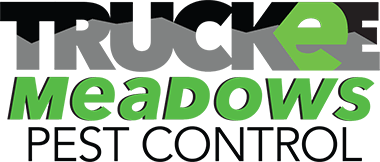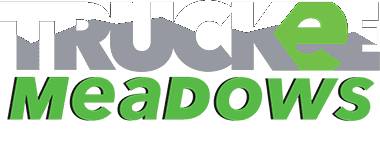Identifying Your Common Pests of Reno
Truckee Meadows Pest Control's Guide to Your Local Unwelcomed Guests
Whether its your home or your business property, no building is exempt from unwelcomed pests. From rodents to insects, Reno has a range of pests that can ruin your comfort. Thankfully, Truckee Meadows Pest Control can keep your properties safe. Each of our technicians is state certified, Purdue University certified and Quality Pro certified through the National Pest Management Association. You will not find a more knowledgeable, more courteous and quality-conscious team in the Reno area–We arrive when we say we will and do what we promise to do. If there should be some unforeseen delay, we will notify you before our scheduled appointment.
Identify Your Pest
Identification is the key first step to get rid of a pest problem. This crucial information will help us determine where to focus our efforts, what strategy to implement, and what treatment products to apply for successful control. While the Reno and Truckee Meadows has a vast range of common pest problems, you can trust our experienced technicians to accurately identify the pest invading your home or business and carry out the best possible plan to eliminate the infestation.
Learn more about the most common pests of the area:
Ants
Ants are closely related to bees and wasps. They are social insects that live in colonies that have various specialized groups. Most ants in a colony are workers and do most of the foraging for food, raising the young, and defend the colony. Ants have three body segments head, thorax and abdomen with a pinched waist. Most ants are identified by type of antennae (elbowed or clubbed) and by the number of nodes in between the abdomen and thorax. Reproductive ants are winged and are often mistaken as termites. Termites have two body segments and the same size pair of wings vs. ants having three body segments and forewings larger than their hind wings.
Common Types of Ants
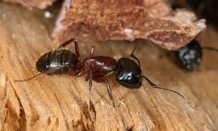
- Carpenter ant –The carpenter ant is polymorphic meaning that there can be more than one size ant in the colony ranging from 1/8” to 1/2” with the queen up to 5/8”. Identified by having one node in between the thorax and abdomen and elbowed 12 segmented antennae without a club. They do not sting but their powerful jaws can produce a painful pinch. Carpenter ants attack wood that has high moisture content. They do not consume wood but cut galleries that leave behind sawdust like shavings.
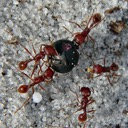
- Harvester Ant – Fairly large ¼” to ½” and orange to reddish in color. Antenna are 12 segmented without a club. 2 nodes between the abdomen and thorax. Found in fields their mounds are stripped of vegetation. The mound consists of small pebbles that have been excavated and usually have 3 entrances. Harvester ants are herbivorous and feed on seeds from the surrounding vegetation and are rarely found in homes. They will bite and have a mildly painful sting. There are two types of Harvester ants in Nevada the California Harvester and the Western Harvester.
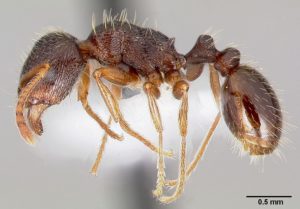
- Pavement ant – This ant gets its name from commonly having its nest under cracks in pavement. Light brown to black with paler legs 1/16” to 1/8”. Antenna have 12 segments with a 3-segmented club. 2 nodes between the abdomen and thorax. Colonies are fairly large containing 3-4000 ants and several queens. Outside they live under rocks or slab constructed homes. Foraging becomes a problem in homes during summer months.
Bed Bugs
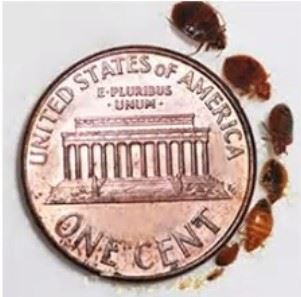
Truckee Meadows Pest Control can help not only detect bed bugs, but help with bed bug elimination. Once you have been told by a pest control operator that you have bed bugs, you have a decision to make: Should you go with Heat Treatment or Conventional Treatment and which one is best for you?
There are no two situations that are the same when it comes to bed bug elimination. There isn’t a silver bullet to fix all them all. This leaves it open to options on what type of service Heat, Conventional or both.
Heat Treatment
- Heat treatment is when we heat an entire domicile or hotel room with large industrial heaters and use fans to create a convection type environment. The heaters are designed to never exceed 135 degrees.
- A liquid residual pesticide is used around the perimeter of the areas to ensure that bed bugs trying to get away from the heat will come into contact and die. Silicon dusts are also applied behind electrical switch plates to prevent harborage areas.
- Clutter levels are something you will want to take into consideration. If you have a lot of stuff in your home heat is a great option. Heat can be applied directly into closets, dressers, armories and to penetrate cloths that might be infested.
- Some benefits to heat are that it kills all instar stages of bed bugs form egg to adult when temperatures reach between 112-122 degrees F.
- Bed bugs are thigmotactic meaning that they like tight spaces areas that are hard to reach with traditional treatments. Heat can penetrate wall voids and under base boards to ensure a thorough treatment.
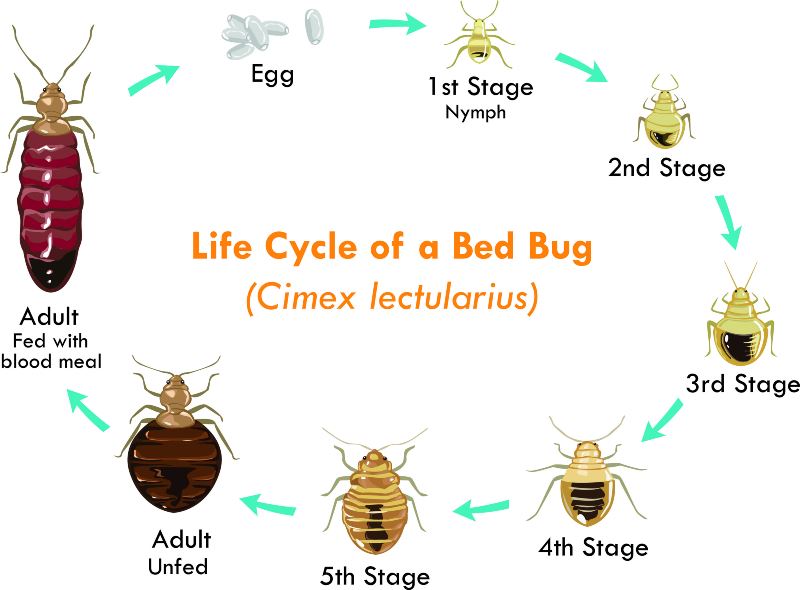
How Long Will Bed Bug Heat Treatment Take?
- Heat Treatments can be done in one day typically within eight hours with a quick follow up service 7-10 days after the initial service.
- Most items can stay in the home when the service is being performed.
Bed Bug Conventional Treatment
- Conventional treatment is when a chemical application is applied directly to all infested items and areas being treated and are sometimes the most economical treatment for smaller infestations.
- When doing a conventional treatment, our recommendation is to do the entire residence not just the areas where the bed bugs are found. Bed bugs are great travelers. If bed bugs found their way into your home, don’t think that they are just in the areas where you sit and sleep.
- Re-infestation is always a potential problem. When planning to do a conventional treatment you will be provided with preparation instructions for your service with directions on how to prepare laundry and secure all items that are not able to be treated. These items must be thoroughly be inspected before being reintroduced into the home.
- Conventional treatments take less time than heat and reentry time is typically four hours after the application is done. Retreatment and follow up services are done 7-10 days after the initial service. Depending on the level of infestation, more than one follow up could be needed.
This Can Be Taken Care Of Quickly, Right?
- Bed bug treatments whether Conventional or Heat are time consuming and labor intensive. There are not any quick fixes. If it sounds too good to be true, then it probably is. Don’t get fooled into DIY products they don’t work, and more times than not make the problem worse.
Bees & Wasps
The Africanized Honey bee has not made its way to Northern Nevada but is found in Southern Nevada. Honey bees are beneficial to our environment as pollinators and should not be exterminated if at all possible. Most times honey bees can be captured and relocated by a professional at no charge to the customer. If you have a problem with bees give us a call and we can identify the problem and help with a resolution. There are several stinging pests found in the Truckee Meadows area including Solitary bees, Ground nesting bees, Cicada Killers, Baldface Hornets, Mud Daubers, and Spider wasps. Below are some of the most common stinging pests we find in Reno.
Bees are social insects that live in colonies. Mature colonies can have 20,000 – 80,000 individuals. Colonies have adult workers that are infertile females, a queen, and male drones that come from unfertilized eggs. The queen can lay as many as 1,500 – 2,000 eggs per day and live for as many as 5 years.
Common Types of Bees & Wasps:
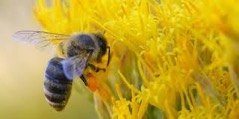
- Honey bee – Honey bees get their name from the sweet yellowish brown fluid they make from nectar of flowers that they use as food. They provide honey and wax. They are identified commonly by their yellow to orange body and black bands. Honey bees are non-aggressive and are typically blamed for stings that come from yellow jackets.
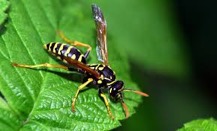
- Yellow Jacket – Yellow Jackets are social insects that live in nests or colonies. Identified by their yellow and black bodies. Adults consist of workers, sterile females, queens, and males that come from unfertilized eggs and usually appear in late summer. They are considered beneficial because their food consists of other insects. Yellow jackets can sting multiple times without losing their stinger. When nests are located near homes, buildings, or parks they become unwanted pests. Overwintering queens can be found indoors seeking warmth or in spring looking for nesting sites.
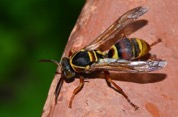
- Paper Wasp – Paper wasps get their name from the paper like material they use to make their umbrella shaped nests. Identified by their yellow and black body with a pinched mid-section. Nests are commonly found under eaves of roofs, less used out buildings, and inside of Jacuzzis. They can sting multiple times without losing their stinger. In late fall inseminated females will search out crevices in flashings, chimneys, door frames, or utility line boxes to overwinter.
Common Types of Cockroaches
There are several species of cockroaches found in the Reno area. Some of the most common are the German cockroach, Brown banded cockroach, Oriental and American cockroaches. Cockroaches are among the oldest insects known dating back 200 million years. They can be introduced in to buildings and homes in cardboard boxes, food packages, and grocery bags. They are also known to travel through utility lines and even sewers.
- German Cockroach – mostly found in homes, apartments, in restaurants adults are pale brown slightly smaller than a half inch long and have wings with two dark stripes that run length wise. They are highly reproductive and have a short life cycle. They lay egg capsules called an ootheca that contain 30 to 40 eggs that will hatch in about 28 days. In homes they are most abundant in kitchen where food sources and moisture are available. German cockroaches like secluded narrow areas cracks and crevasses, voids, behind sinks, and under counter and table tops.
- Brown Banded Cockroach – The Brown Banded cockroach is the smallest cockroach found in Nevada. They can be identified by being light tan to reddish brown and become lighter towards their rear. Adults have two light colored bands at the base of their wings. When disturbed males can fly but females never do. They prefer dark areas like cabinets, boxes, and drawers. Egg capsules generally contain about 18 eggs and hatch in about 50 to 75 days.
- Oriental Cockroach – Usually found around dark moist areas like storm drains, water meter boxes, plumbing fixtures, sewers, and garbage they are commonly called “water bugs”. Oriental cockroaches are commonly found outdoors during warmer months they can withstand low temperatures. They are dark reddish brown or black in color. Egg capsules are dropped in warm sheltered areas near a food source and contain about 16 eggs and hatch in about 60 days.




Pantry Pests
Pantry pests contaminate more food than they eat, and most people find the contaminated products unfit for consumption. Millions of dollars a year are lost because of pests getting into our food supplies. It’s not just the food that we eat many pests are found in our pets food as well.
Common Types of Pantry Pests:
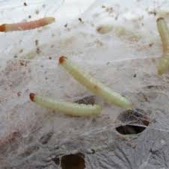
- Indian meal moth – Indian meal moth larva are commonly found in dog and cat food and bird seed that you bring home from the pet store. The adult IMM ½” in length gray with bronze wing tips. Commonly found flying in homes.
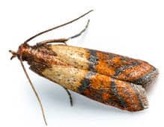
- The damage that they create is from its larvae. The adult female is capable of laying 200 – 400 eggs that are laid near a suitable food source. Newly hatched larvae are very small and can penetrate loosely sealed packaging. After feeding they move away from their food source to pupate. From egg to adult takes about 40 – 55 days.

- Flour beetle – Two of the most common are the Confused flour beetle and the Red flour beetle. Adult beetles are reddish brown and are very small about 1/8”. Both species have wings but rarely fly. Over a period of 5 – 8 months 300 – 500 eggs can be laid. Both adults and immatures feed on flour.
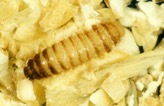
- Warehouse beetle – The Warehouse beetle is the most destructive pest of stored grain products. Often confused with the Carpet beetle because their larval stage look very similar.
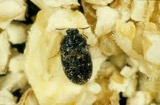
- The Larvae are just under ¼” have long sharp hairs which are irritating to some sensitive people. The adult is brownish in color and about 1/16”. An adult female beetle can lay more than 100 eggs at a time, which will hatch into larvae within seven to 35 days.
Rodents
Common Types of Rodents:
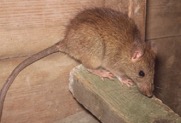
- Roof Rat and Norway Rat – The Norway rat is the least common rat in Nevada. Identified by the tail being shorter than the length of the body. Their color varies from grey brown on the back and gray white on the belly. The Roof rat is more common in the Las Vegas area than in Reno. Identified by the tail being the head and body with large ears. From the tail to the nose their length can vary from 11” to 18”.
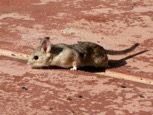
- Desert Woodrat – Also commonly known as the Packrat. They have large eyes and hair covered ears .Colored yellowish brown to grayish brown on top and gray below. Their tail is bi colored dark on top and white below and their feet are white. Primarily nocturnal when they are not feeding they are gathering debris for their nesting sites in burrows.
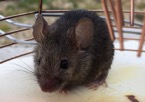
- House mouse – The house mouse is the most common rodent in the Reno area. They have large ears and a pointed muzzle and are typically grayish. Commonly found indoors they are also well adapted to living outdoors. Populations often move indoors when weather becomes severe. They have poor eyesight and are colorblind but have a keen sense of smell, taste, hearing, and touch. They use their sense of smell to find food and recognize other mice.
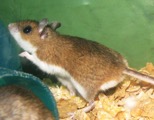
- Deer Mouse – The deer mouse is a host of the Hantavirus. The Hantavirus is a viral illness transmitted from saliva, feces, or urine of infected animals. Typically the infection is caused from inhalation of the virus and causes severe respiratory illness that can result in death in about 30% of its victims. The deer mouse can be identified by its distinct markings having a bi colored tail the upper half tan gray and lower half white.
Spiders
Three most common spiders that we find in the Truckee Meadows area. Although there are thousands of spider species give us a call and we can have your specific spider identified.
Common Types of Spiders:
- Black Widow – Common throughout the United States and Northern Nevada these spiders get their name from the common misconception that the female eats the male after mating. This rarely happens in nature. The adult female body is about 1/2” in length with a spherical abdomen. Typically are black and sometimes brown with 2 reddish triangular markings usually joined to form a reddish hourglass shaped marking.
- Outside black widows are found in undisturbed areas that are cool and dry. Some examples are under decks, woodpiles and seldom used corners of garages or crawlspaces. They prefer cluttered areas that give them more shelter. Their prey consists primarily of other insects.
- Wolf spider – This spider is classified as a hunting spider. The female body can be from 3/8” to 1 3/8”. Usually dark brown with paler stripes or markings and a very hairy abdomen.
- Mating occurs in Fall with males dying before winter and females overwinter and then lay their eggs from May to June. Each egg sack containing 100-135 eggs. The mother will bite open the sack allowing the spiderlings to crawl onto her abdomen where they will stay for a week or longer.
- Wolf spiders actively hunt during the night and sometimes during the day. Outside they are found under stones, firewood, and leaf litter. Not commonly found inside but when they are they are brought in usually with firewood. Once inside they often will stay inside and tend to stay near floor level along walls or under furniture.
- Sunspider also called sun scorpion, or camel spider whose common name refers to their habitation of hot dry regions as well as to their typically golden color. They are also called wind scorpions because of their swiftness, camel spiders because of their humped heads, they are hairy and have a rounded abdomen, while the front appendages somewhat resemble those of a scorpion. Body length is 1/”4 to 2 inches. Sunspiders generally are nocturnal and are primarily carnivorous although they are omnivorous, with most species feeding on termites, beetles, and other small, ground-dwelling insects. They are aggressive hunters and voracious opportunistic feeders and have been found feeding on snakes, small lizards, and rodents.
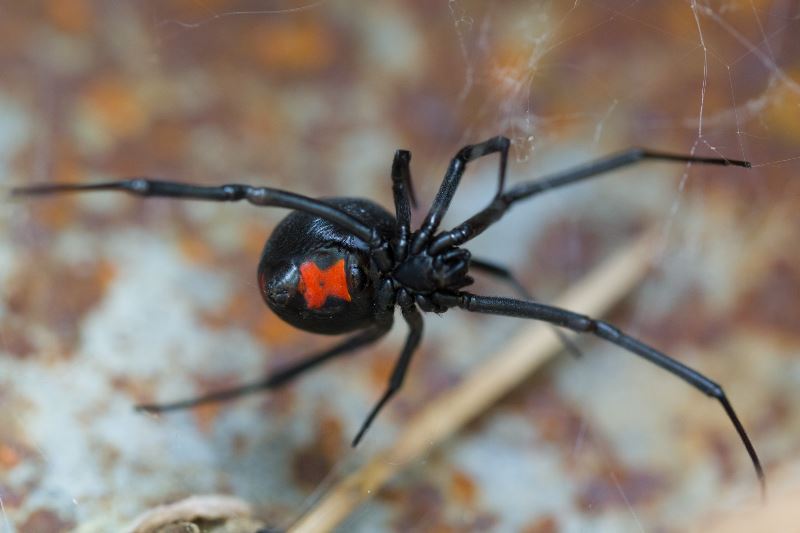
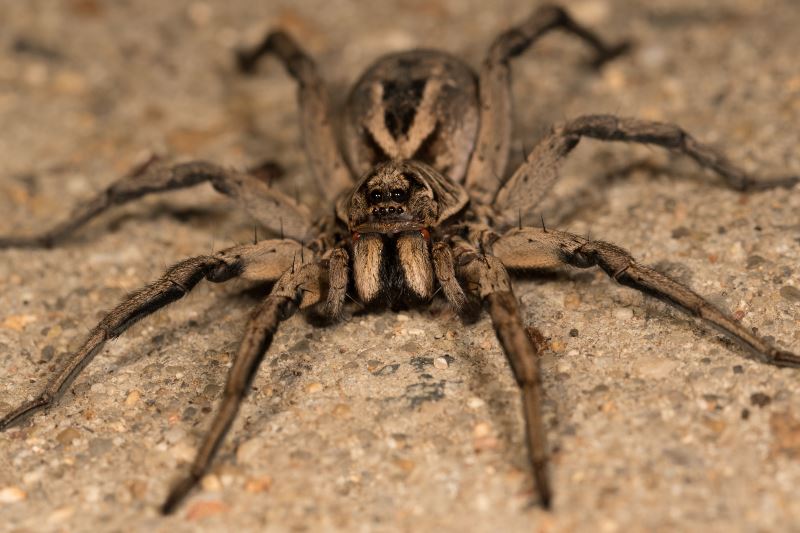
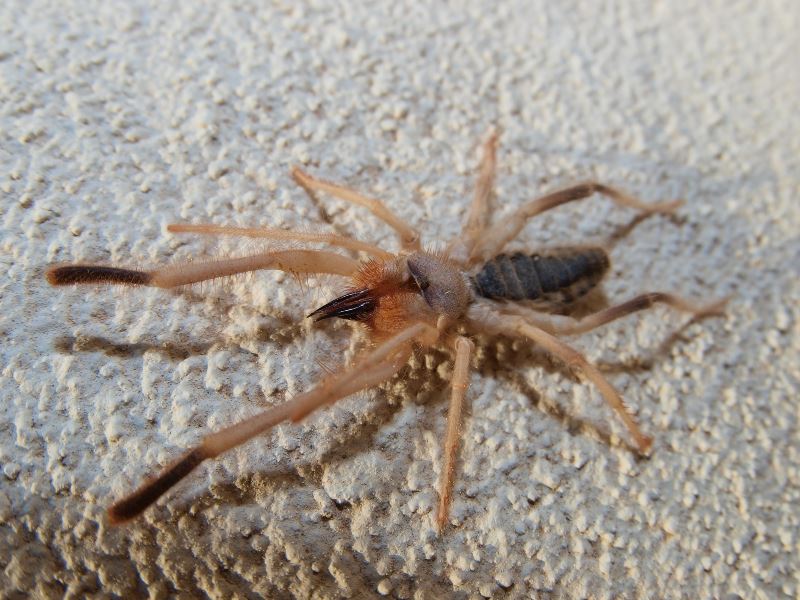
-
“I had them come out to my house in Dayton and Daniel was very professional. He sprayed our house and got rid of all of the cobwebs on the house.”
Kyle S.

